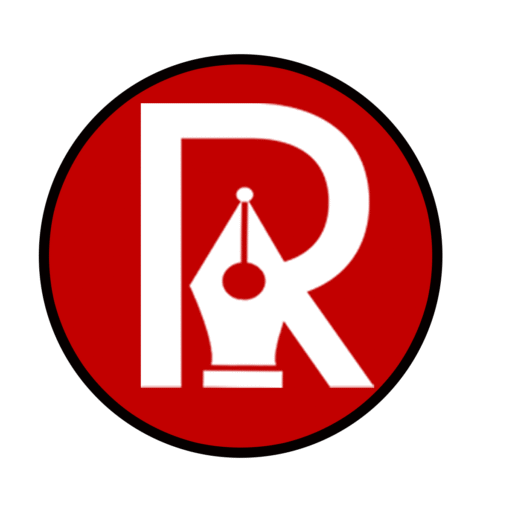
Transform your design business with a client-centric design workflow 2025. In 2025, the design industry thrives on client satisfaction as competition intensifies and expectations rise. With clients demanding personalized experiences and seamless delivery, generic approaches no longer suffice.
The influx of innovative tools and evolving trends makes a client-focused workflow essential for staying ahead. This guide outlines how to build workflows prioritizing client needs using 2025 tools and trends, focusing on project management, communication, feedback integration, and personalized deliverables for client-centric design workflow 2025. Whether you’re managing tight deadlines or tailoring designs to unique preferences, these strategies will elevate your business.
Expect insights into cutting-edge tools, practical strategies to enhance efficiency, and links to cluster posts for deeper dives into each area. From freelancers seeking to impress new clients to studios aiming to retain loyal ones, this resource equips you with the tactics to succeed. Ready to revolutionize your client relationships in 2025? Let’s explore the essential elements of a successful client-centric design workflow 2025.

Section 1: Streamlined Project Management
Efficient project management is the foundation of client-centric design workflow 2025. In 2025’s fast-paced design landscape, delivering projects on time and within scope is crucial to meeting client expectations and building trust, making streamlined management a priority.
Tool Selection: Leverage Asana or Monday.com, enhanced with 2025 AI scheduling features, to set milestones. These tools predict task durations and adjust timelines dynamically, ensuring your client-centric design workflow 2025 stays on track. Choose based on your team size—Asana for freelancers, Monday.com for studios—tailoring the setup to client needs.
Client Updates: Implement automated progress reports to keep clients informed. Use built-in features to send weekly summaries of milestones and deliverables, a key element of client-centric design workflow 2025. This transparency reduces miscommunication and fosters confidence, aligning with 2025’s demand for real-time engagement.
Budget Tracking: Integrate QuickBooks for real-time cost monitoring. Link it with your project tools to track expenses like software licenses or freelance fees, ensuring your client-centric design workflow 2025 remains profitable. Set alerts for budget overruns to maintain financial clarity for clients.
Link to Cluster Post 1: Explore “Project Management for Designers 2025” for detailed tutorials on mastering these tools and techniques.
Tip: Conduct weekly check-ins to align with client priorities. Schedule brief meetings or calls to review progress and address concerns, keeping your client-centric design workflow 2025 client-focused. This habit strengthens relationships and ensures deliverables meet expectations in 2025’s competitive market.
Streamlined project management not only enhances efficiency but also positions your design business as reliable and client-oriented, laying the groundwork for a successful client-centric design workflow 2025. By adopting these tools and practices, you can manage complex projects with ease while exceeding client satisfaction goals.
Section 2: Effective Client Communication
Clear communication enhances client-centric design workflow 2025. In 2025’s design industry, where client expectations for transparency and responsiveness soar, effective dialogue builds trust and ensures project alignment, making it a cornerstone of your workflow.
Communication Tools: Leverage Slack with 2025 voice AI or Zoom for virtual meetings. Slack’s AI transcribes discussions and suggests action items, while Zoom’s enhanced 2025 features like real-time translation improve global collaboration, strengthening your client-centric design workflow 2025. Select tools based on client preferences for seamless interaction.
Response Strategy: Set 24-hour reply goals to build trust. Prompt responses to emails or queries demonstrate reliability, a critical aspect of client-centric design workflow 2025. Use automated acknowledgments to confirm receipt, reassuring clients even during busy periods.
Client Portals: Use Basecamp for centralized document sharing. Upload briefs, mockups, and timelines in one accessible space, enhancing your client-centric design workflow 2025. This reduces email clutter and allows clients to track progress independently, aligning with 2025’s demand for self-service options.
Link to Cluster Post 2: Dive into “Client Communication Design 2025” for best practices on mastering these techniques.
Tip: Use templates for consistent, professional updates. Create standardized email or portal messages for project milestones, ensuring your client-centric design workflow 2025 maintains a polished image. Customize templates with client-specific details to add a personal touch.
Effective communication not only prevents misunderstandings but also fosters long-term client relationships, elevating your client-centric design workflow 2025. By adopting these tools and strategies, you can meet 2025’s heightened communication standards, turning satisfied clients into advocates for your design business.
Section 3: Feedback Integration Techniques
Seamless feedback integration drives client-centric design workflow 2025. In 2025’s design landscape, incorporating client input efficiently ensures designs align with their vision, fostering satisfaction and reducing revisions, a key pillar of your workflow.
Feedback Tools: Employ InVision or Lookback with 2025 annotation features. InVision’s AI-driven comments highlight specific design elements, while Lookback’s real-time recording captures client reactions, enhancing your client-centric design workflow 2025. Choose tools that match your project complexity for optimal results.
Iterative Process: Schedule review cycles every two weeks. Break projects into phases—e.g., concept, draft, final—allowing clients to provide input at each stage, a vital part of client-centric design workflow 2025. This structured approach keeps revisions manageable and timely.
Client Collaboration: Host live feedback sessions via Miro. Use its interactive whiteboard to sketch changes during calls, strengthening your client-centric design workflow 2025. These sessions encourage real-time dialogue, aligning designs with client expectations in 2025’s collaborative environment.
Link to Cluster Post 3: Check “Feedback Integration Design 2025” for techniques to master this process.
Tip: Summarize feedback in writing to avoid miscommunication. After sessions, send a concise email or document outlining key points and action items, ensuring your client-centric design workflow 2025 remains clear. This step prevents misunderstandings and builds client trust.
Effective feedback integration not only streamlines revisions but also deepens client engagement, elevating your client-centric design workflow 2025. By leveraging these tools and techniques, you can turn feedback into a collaborative asset, meeting 2025’s demand for responsive, client-driven design processes and positioning your business as a trusted partner.

Section 4: Personalized Deliverables
Tailored deliverables elevate client-centric design workflow 2025. In 2025’s design market, clients expect designs that reflect their unique brand identity and preferences, making personalization a competitive edge in your workflow.
AI Customization: Use Adobe Sensei to adapt designs to client preferences. This 2025-enhanced tool analyzes client input and suggests color schemes or layouts, enhancing your client-centric design workflow 2025. Train the AI with past projects to deliver highly relevant customizations.
Data Insights: Analyze client data with 2025 CRM tools like HubSpot. Leverage advanced analytics to uncover preferences—e.g., preferred styles or deadlines—integrating these insights into your client-centric design workflow 2025. This data-driven approach ensures designs align with client expectations.
Presentation Tools: Showcase final designs with AR previews via Gravity Sketch. This 2025 technology allows clients to view designs in 3D, offering an immersive experience that elevates your client-centric design workflow 2025. Use AR to highlight how designs fit real-world applications.
Link to Cluster Post 4: Explore “Personalized Design Deliverables 2025” for tech insights on mastering these tools.
Tip: Offer customization options during initial consultations. Discuss preferences like typography or imagery upfront, ensuring your client-centric design workflow 2025 starts with a client-focused foundation. This early engagement builds trust and reduces revisions.
Personalized deliverables not only meet client demands but also strengthen your reputation, advancing your client-centric design workflow 2025. By harnessing AI, data, and AR, you can deliver standout designs that resonate with clients in 2025’s evolving industry, turning satisfaction into long-term partnerships.
Conclusion
A client-centric design workflow 2025 boosts satisfaction, efficiency, and loyalty through streamlined management, effective communication, seamless feedback integration, and personalized deliverables. In 2025’s competitive design landscape, these elements transform client relationships into partnerships, driving repeat business and referrals. By adopting tools like Asana, Slack, InVision, and Adobe Sensei, you can meet the industry’s evolving demands while exceeding client expectations. Start optimizing your workflow today with these strategies—set up project milestones, enhance communication protocols, integrate feedback cycles, and tailor your deliverables. The result? A more efficient, client-focused operation that stands out in 2025’s market. For in-depth guidance on each area, visit our cluster posts: “Project Management for Designers 2025,” “Client Communication Design 2025,” “Feedback Integration Design 2025,” and “Personalized Design Deliverables 2025.” Take the first step now to revolutionize your approach and build a thriving client-centric design workflow 2025 that secures your design business’s future.
